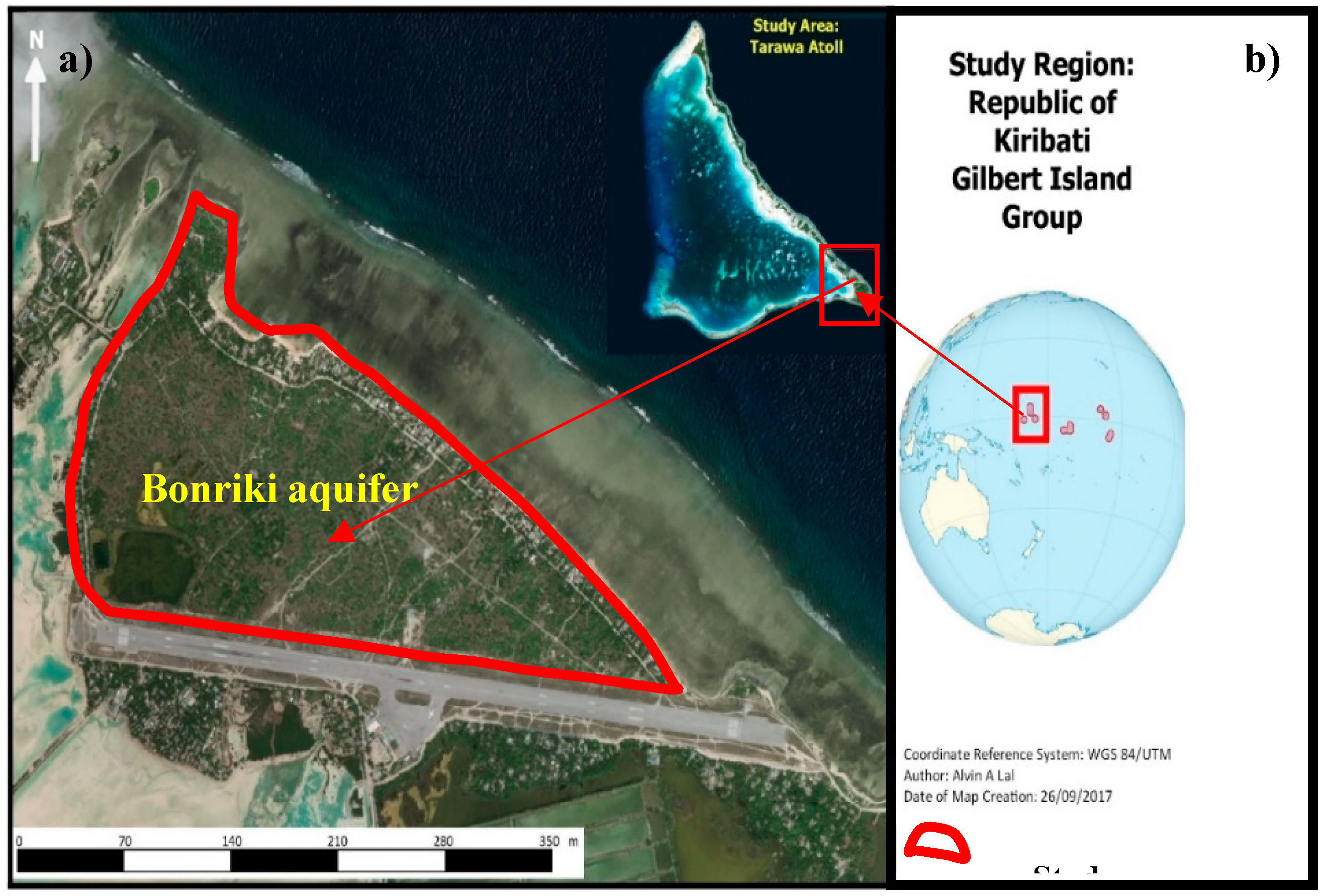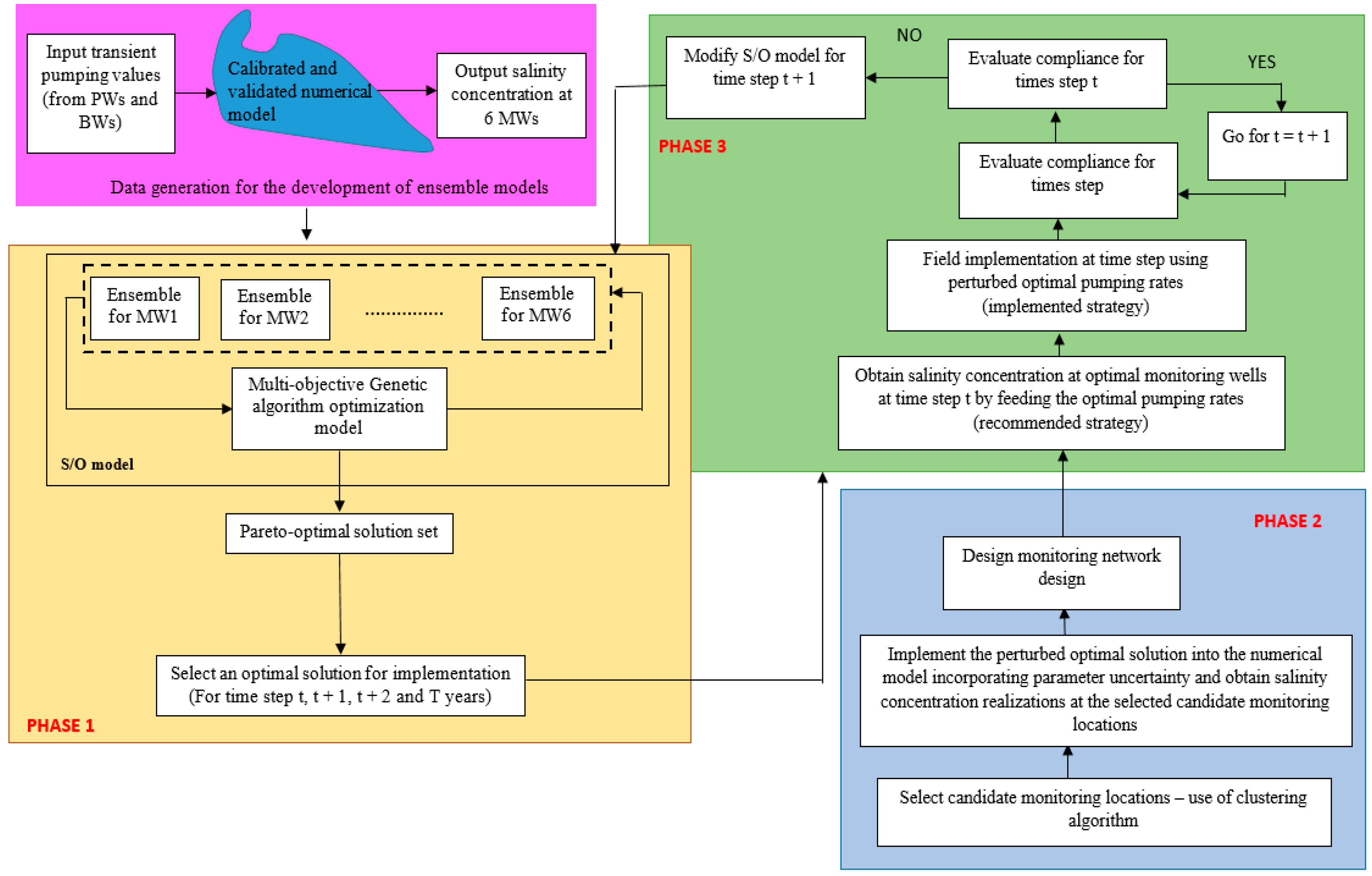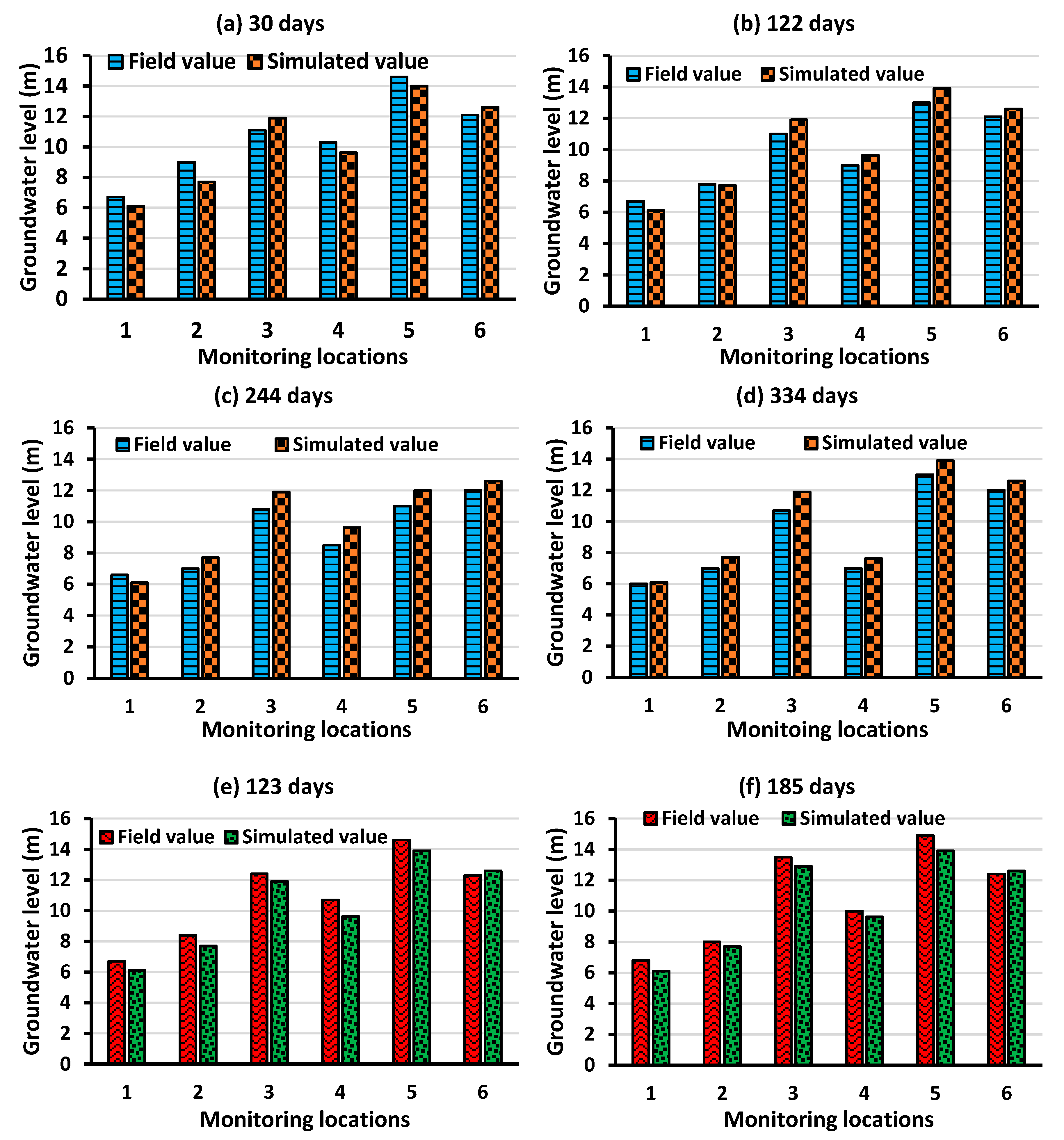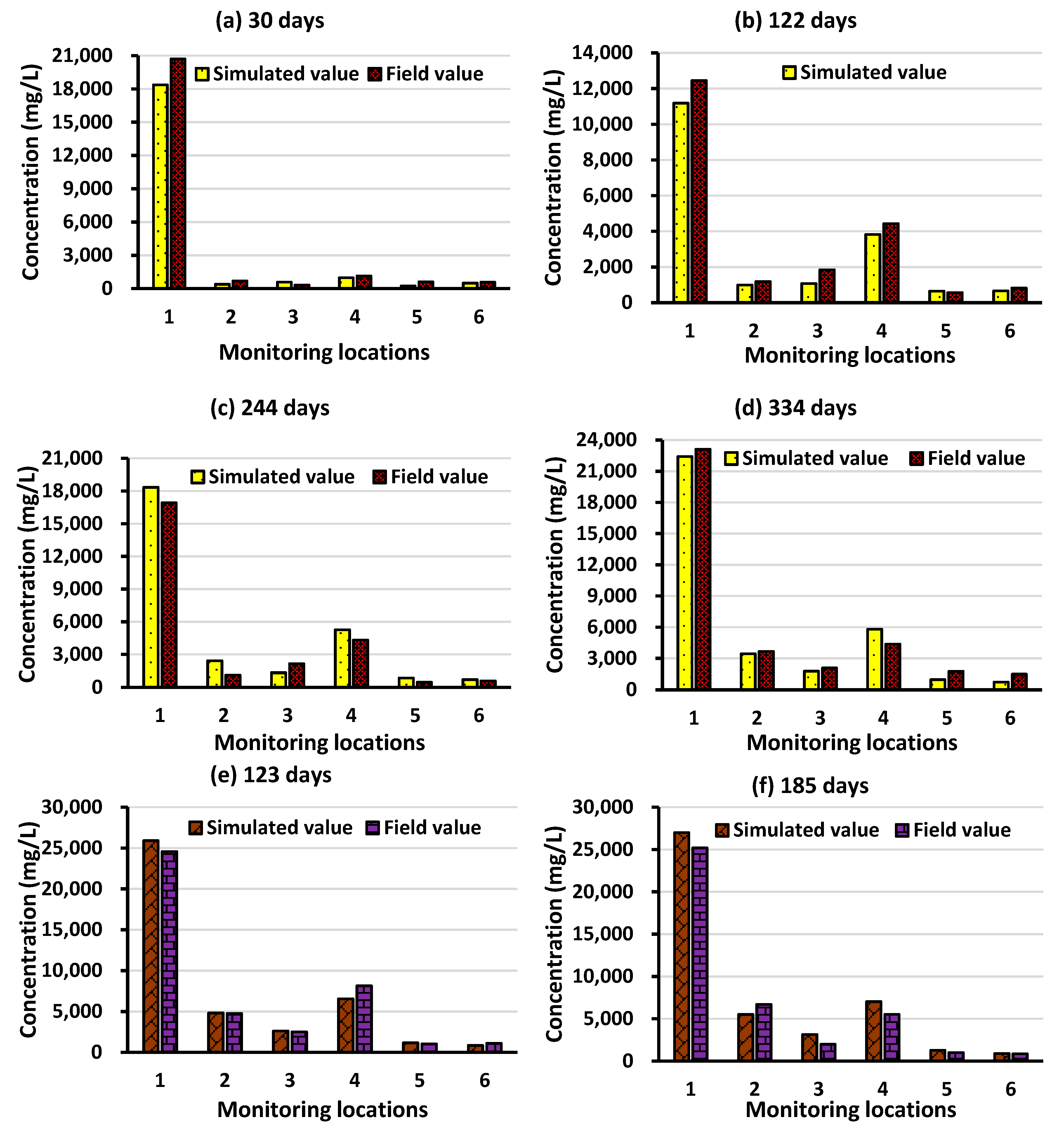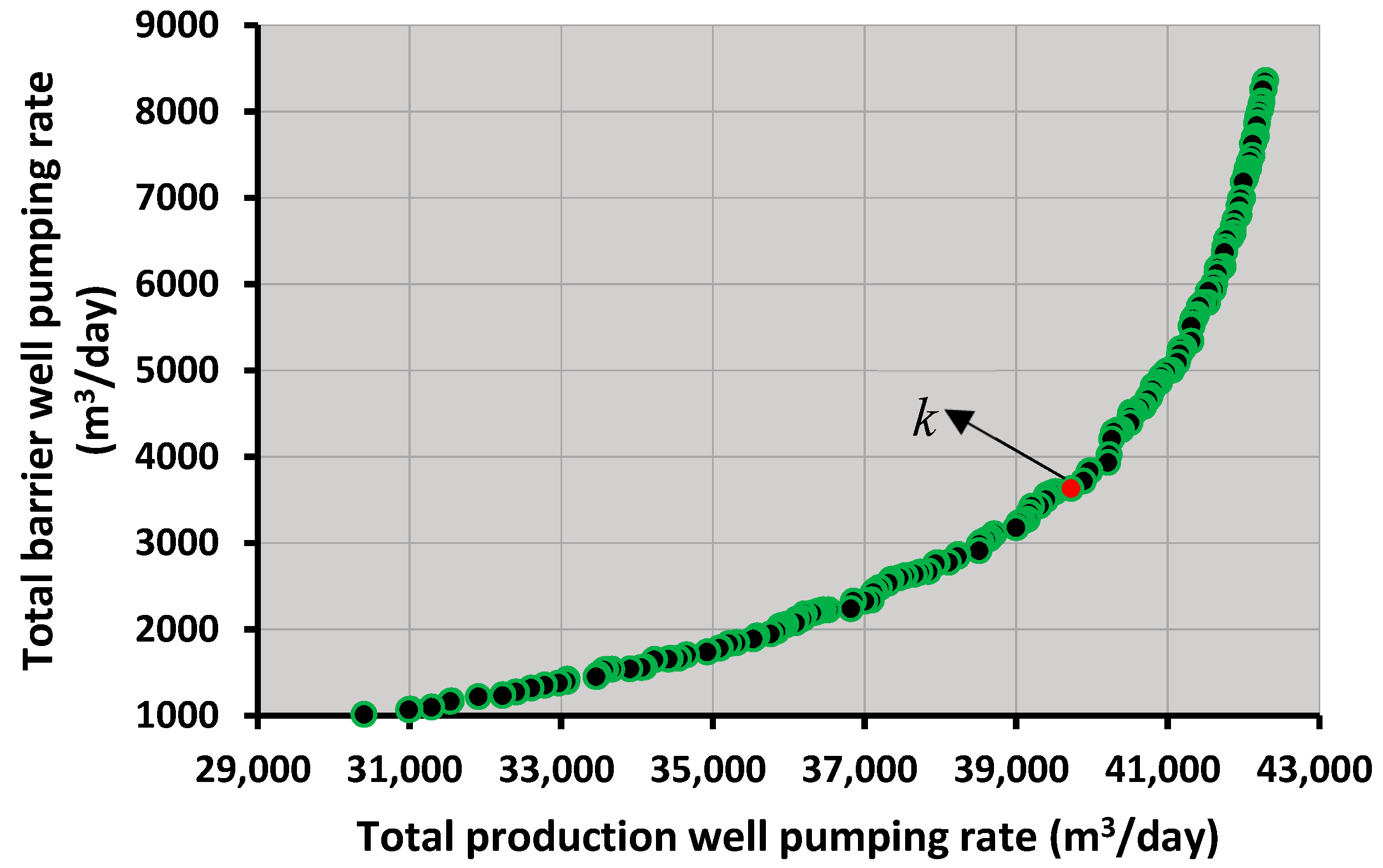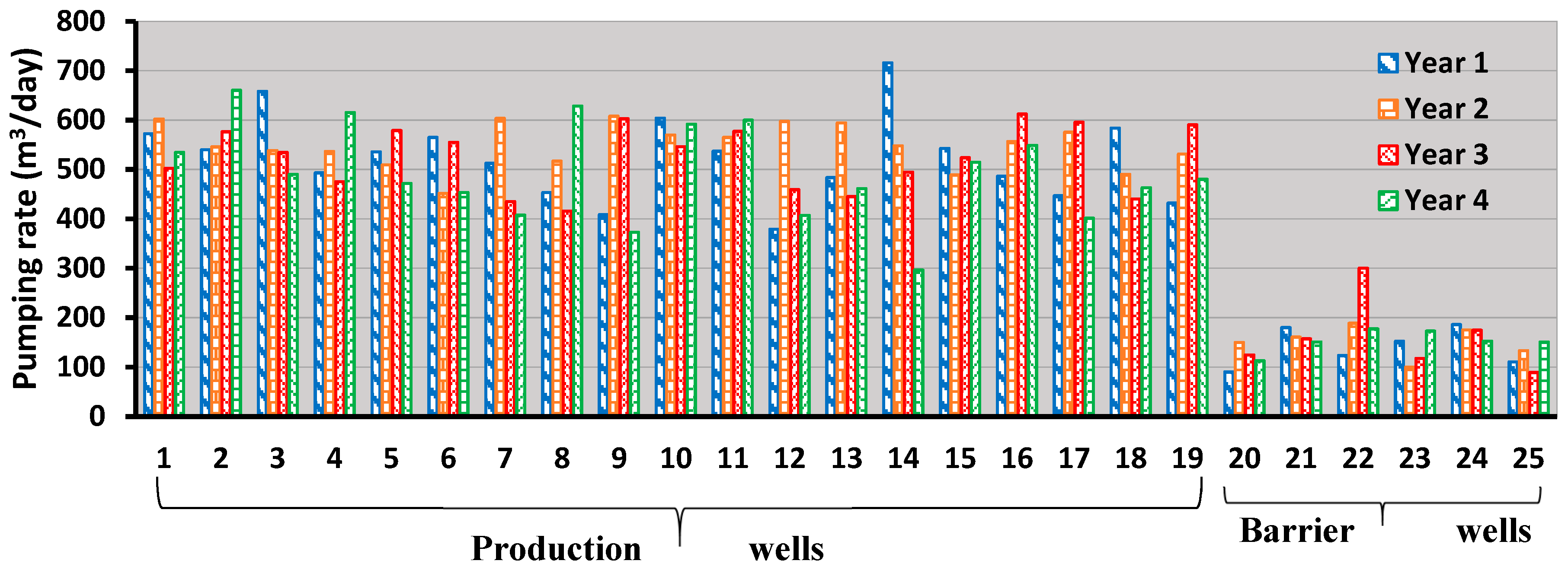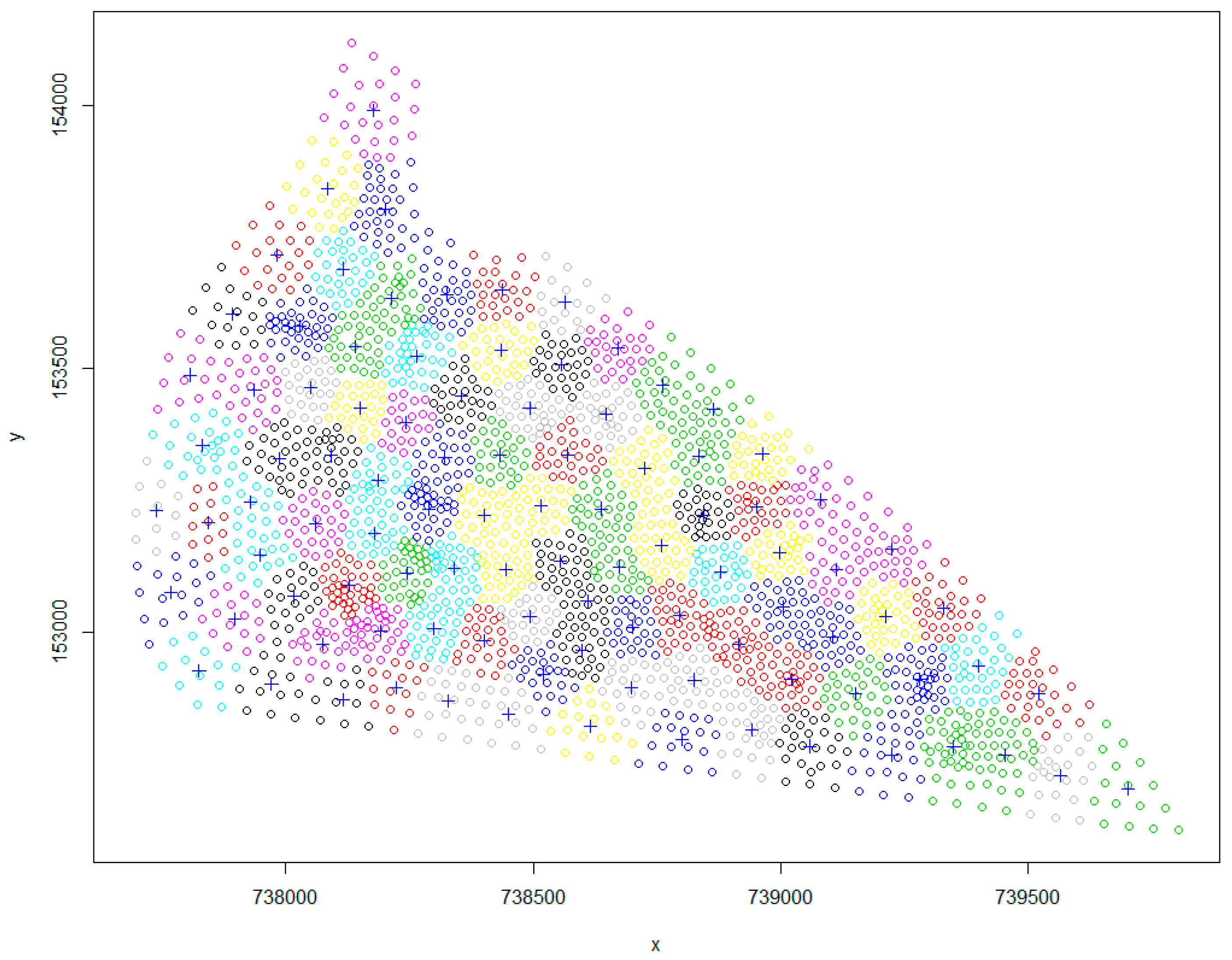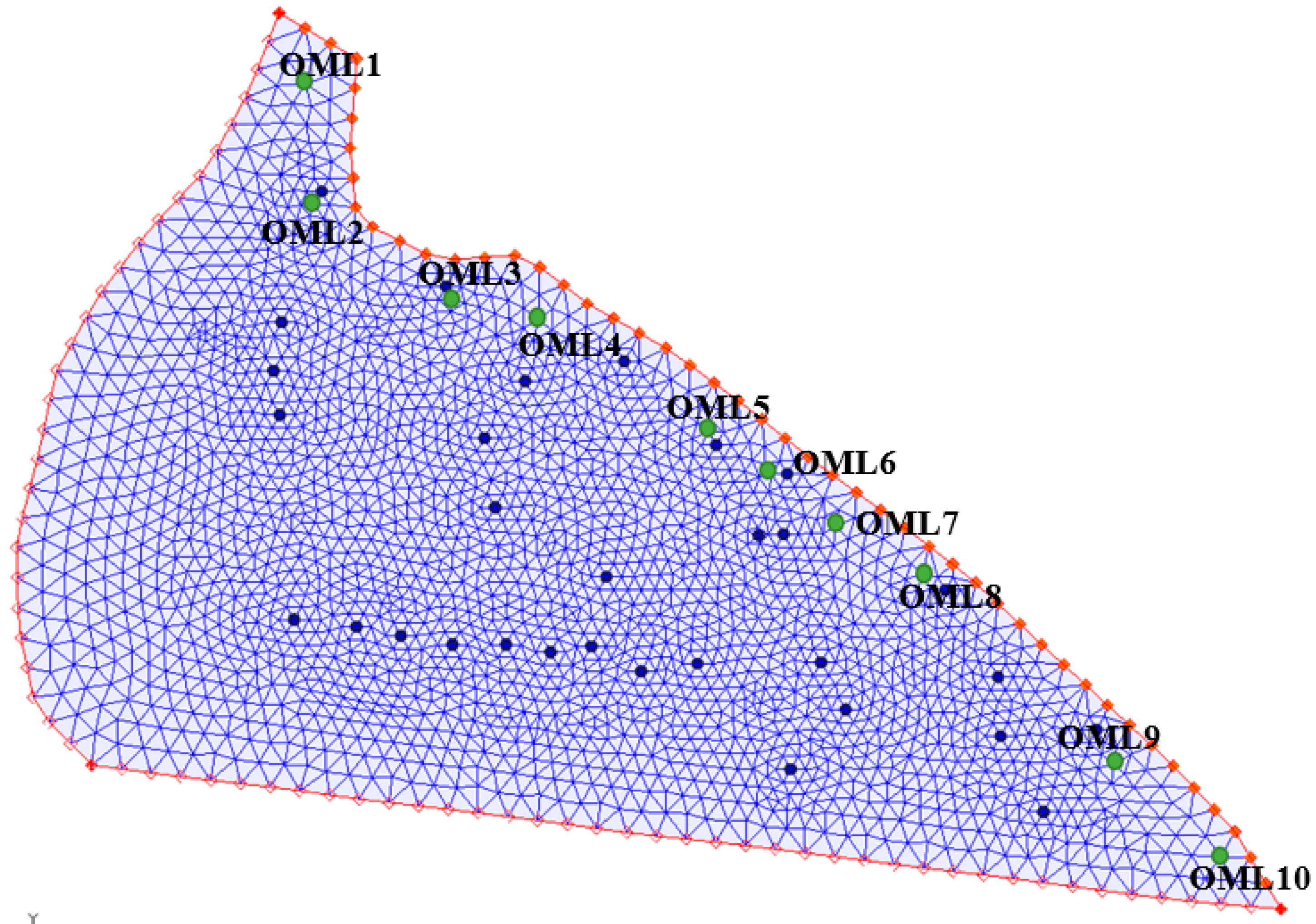Details of the methodology proposed for the three-phase adaptive coastal aquifer management framework are presented in the subsequent sections.
2.3. Phase 3: Sequential Modification of the Management Strategy
Optimal coastal aquifer management strategies for sustainable control of saltwater intrusion are largely developed for long time horizons, T. However, they are implemented in smaller time steps, t. With the help of a properly designed monitoring network, it is possible to gather feedback information regarding the compliance and/or noncompliance of an implemented optimal management strategy, or noncompliance of the resulting concentrations with the predicted concentrations. This information can be utilized to sequentially modify and/or update the management strategy at succeeding time steps, improving the prospects of attaining saltwater intrusion management goals.
In this study, a management time horizon of 4 years (T = 4) was considered. However, a prescribed management strategy was implemented in steps of 1 year (i.e., t = 1, 2, 3, and 4). The implemented 4-year optimal pumping strategy (selected from the Pareto front) was obtained by solving the homogenous ensemble SVMR surrogate-based coupled S/O model. Yearly salinity concentration data at the designed optimal monitoring networks as a result of the implemented pumping rates can be obtained using the variable density flow and salt transport numerical model. However, in real field scenarios, it is a common practice that the prescribed optimal pumping strategy will not be accurately implemented, and/or, the actual concentrations resulting from an implemented strategy will differ from the predicted impacts due to various uncertainties in prediction. Here, for performance evaluation purposes only, the field-level deviations between actual and predicted concentrations after the first year of implementation (t = 1) of optimal pumping strategy is incorporated by simulating the concentrations taking into account random deviations of actual pumping rates from prescribed pumping rates. The perturbed pumping rates different from optimal prescribed pumping rates are generated by adding random errors (0%–20%) to the optimal prescribed pumping rates. The inclusion of these field-level deviations will affect the resulting salinity concentration and may lead to noncompliance with management goals in terms of permissible salinities. Again, for performance evaluation purposes, the actual salinity concentrations at the designed OMWs for each time step can be simulated for the perturbed pumping rates, using the variable density flow and salt transport numerical simulation model. In actual applications, no such artificial perturbation is required, as the actual concentrations will be measured in the field using the designed monitoring network. The optimal monitoring network designed to gather information about the noncompliance of the prescribed management strategy helps in updating or revising the management strategy for t = 2, 3, and 4 to achieve the original management goals. The multi-objective coupled S/O model was utilized to sequentially update the management strategy using feedback information from the earlier time steps. This was performed by re-running the S/O model for future time steps after updating the initial and boundary conditions acquired from the monitoring network. For sequential modification of the pumping rates using feedback information, the multi-objective management model is solved as a single objective optimization problem. Objective 2 (Equation (6)) of the original multi-objective management model (i.e., barrier well pumping for the selected management strategy) is added as an additional constraint. The other constraints (Equations (7) and (8)) and bounds (Equations (9) and (10)) of the optimization problem remained unchanged.
2.4. Case Study: Application and Evaluation of the Developed Methodology
The developed coastal aquifer adaptive management methodology was applied to the Bonriki aquifer located in Kiribati. Kiribati is a small Pacific Island developing country situated in the central Pacific Ocean. The Bonriki aquifer is located in South Tarawa, which is the most densely populated area in Kiribati. The geographic location of Kiribati and the Bonriki aquifer is presented in
Figure 1. Extracted groundwater from the Bonriki aquifer is the main source of fresh water for the people of South Tarawa [
54]. Approximately more than 60% of the South Tarawa population are dependent on the extracted groundwater from the Bonriki aquifer [
55].
The Bonriki aquifer with an area of 1.50 km
2 and a depth of 60 m was modeled using the FEMWATER computer package. The lithology data from Bosserelle et al. [
56] was used to map the lithology of the Bonriki aquifer. Geologic data from 19 boreholes were utilized to characterize the Bonriki aquifer as a two-layer system. Layer 1 comprised of Holocene sediments and layer 2 consisted of Pleistocene sediments, similar to other small Pacific Island aquifers [
57]. The Bonriki aquifer consisted of 19 PWs for the extraction of groundwater. Also, as a management option, 6 BWs were assumed to be located near the sea face (along the sea-side boundary) to hydraulically minimize saltwater encroachment into the aquifer. Six active monitoring wells (MWs) were also used for salinity concentration monitoring purposes. The entire model domain was horizontally discretized into a mesh comprising of small triangular elements. The model domain with specific well locations is presented in
Figure 2.
The three boundaries surrounding the model domain are labeled as Boundary I, Boundary II, and the sea-side boundary. Boundary I and Boundary II are denoted with specified pressure head boundaries as heads along these two boundaries are not strictly zero. A pressure head of 1 m (at the top end) is assigned to Boundary I and II and allowed to vary linearly along the boundary until it reaches a constant value of 0 m at the sea-side boundary. The sea-side boundary is in direct contact with the sea. Hence, the sea-side boundary is specified as a constant head and constant concentration boundary. A constant head of zero and a constant concentration of 35,000 mg/L is assigned to this sea-side boundary. Groundwater recharge via rainfall was represented by a constant vertical flux across the entire model domain.
The field values of groundwater pumping rates, groundwater level (GL), and electrical conductivity (EC) data were obtained from Sinclair et al. [
58]. During calibration and validation, pumping from all 19 PWs were considered. Barrier well pumping rate was set to zero. GL and EC data from 6 MWs were used for the calibration and validation process. The EC data were multiplied by a factor of 0.69 to obtain concentration data in mg/L, as proposed in Ghassemi et al. [
59,
60]. GL and EC data were available for a period of 17 months only (April 2013 to August 2014). The accessible 17 months of data were separated into two sets: SET I and SET II. SET I contained 12 months of data (April 2013 to March 2014), which were used for calibration. SET II contained 5 months of data (April 2014 to August 2014), which were used for validation.
The calibration process was performed using the trial and error approach. The initial hydraulic conductivity values for the two layers were obtained from Bosserelle, Jakovovic, Post, Rodriguez, Werner, and Sinclair [
56]. Layer 1, which contained Holocene sediments, had very low hydraulic conductivity values when compared to Pleistocene sediments (layer 2). The large differences in the hydraulic conductivity of the two layers are documented in Bosserelle, Jakovovic, Post, Rodriguez, Werner, and Sinclair [
56] and White et al. [
61]. In this study, vertical heterogeneity of the two layers was considered with each having different representative hydraulic conductivities. Also, the hydraulic conductivity of both the layers was considered anisotropic in the x, y, and z directions. The average representative hydraulic conductivity of each layer was used to simplify the variable density flow and salt transport numerical model and also ensure its convergence. The other hydrological parameters of each layer were considered homogenous. The final representative hydraulic conductivity for both layers were obtained based on the calibration and validation process.
For calibration, the variable density flow and salt transport numerical simulation model was run in a transient mode (with monthly time step) for 334 days. After gradually and iteratively modifying hydraulic conductivity, porosity, and recharge within a reasonable range, an acceptable match (R
2 value) between the field and simulated GL and concentration values at the 6 MWs were established. For calibration, the aim was to achieve a targeted R
2 value >90%. The other parameters were obtained from available hydrologic literature (
Table 1) and were omitted from the calibration process. The validation stage using SET II was initiated only after the R
2 value >90% for all the 6 MWs was recorded. The calibrated aquifer parameters were verified by comparing them with the results from similar Pacific Island aquifer modeling studies (e.g., Underwood et al. [
62]) and also with the results from the earlier developed SEAWAT model of the Bonriki aquifer presented in Bosserelle, Jakovovic, Post, Rodriguez, Werner, and Sinclair [
56]. The final representative aquifer parameters used to develop the Bonriki aquifer model are listed in
Table 1.
The validated model was used to evaluate the developed adaptive management coastal aquifer framework. Firstly, the multi-objective management model was evaluated using the developed variable-density flow and salt transport numerical model. All the 19 operational PWs and 6 BWs were used. A total management horizon of 4 years was considered. A total of 100 decision variables (25 wells × 4-year management horizon) were implemented into the S/O model. The maximum (1200 m3/day) and minimum (0 m3/day) pumping limits for both well types were added as bounds. The maximum allowable salinity concentration at the 6 MWs after the management period was incorporated as an optimization constraint. Each SVMR model was developed (trained and validated) using 700 input–output datasets. The 700 sets of randomized input pumping rates from both well types were generated using LHS methodology. The maximum (1200 m3/day) and minimum (0 m3/day) pumping limits for both the well types were added as bounds. Each set of the generated input pumping rates were fed to the variable-density numerical flow and transport model separately to obtain salinity concentration data at the respective monitoring wells. Input pumping and output concentration datasets were used to train and test an SVMR surrogate model for each location. The training and testing of the SVMR models in the ensemble were done on the MATLAB 2017a platform. To achieve satisfactory prediction results, the Gaussian kernel was used, with ε, C;, and γ (Gaussian kernel parameters) having a value of 0.60, 10, and 0.001, respectively. These parameter values were obtained after numerous experimental runs. Each standalone SVMR model could only predict the salinity concentration at a specific monitoring well. Ten different combinations of hydraulic conductivity and porosity values were used to develop 10 different SVMR models for each monitoring well. The prediction results of these 10 SVMR models were integrated into an ensemble. Thus, 6 ensemble SVMR models were developed to predict salinity concentration at the 6 corresponding MWs. For each SVMR model, the hydraulic conductivity input values were derived from a log-normal distribution with the calibrated value of hydraulic conductivity as the mean and using a variance of 0.4 m/d. Similarly, porosity input values were derived using a normal distribution with a calibrated value of porosity as the mean and a variance of 0.1.
The validated SVMR ensemble models were externally coupled to the multi-objective genetic algorithm (MOGA) optimization model using the MATLAB 2017a platform. One of the main reasons for using MOGA was its efficiency. In a single run, MOGA can provide the optimal Pareto front comprising of non-dominated solutions at the end of the stated number of generations. For MOGA implementation, a population size of 2000, function tolerance of 1 × 10−4, constraint tolerance of 1 × 10−3, Pareto front population fraction of 0.3, and crossover fraction of 0.8 were utilized. The number of generations used was fixed to 10,000. This value was obtained after trying different generation sizes for the convergence of the population. The constraint of the optimization (maximum allowable salinity levels at the 6 MWs labeled as MW1, MW2, MW3, MW4, MW5, and MW6) ensured that the salinity at the MWs was restricted to a pre-specified limit. The maximum tolerable salinities for MW1 and MW2 were set to 20,000 mg/L. MW1 and MW2 were closer to the shoreline and restricting the salinity levels at these locations to very lower levels was impractical. The maximum acceptable salinity concentration at MW3 and MW4 was set to 5000 mg/L and 4000 mg/L, respectively. Finally, the maximum acceptable salinity concentrations at MW5 and MW6 were set to 450 mg/L. MW5 and MW6 are located in an area of concentrated pumping well locations. It is anticipated that the water extracted from these locations are of good quality and suitable for consumption by the local South Tarawa communities.
For Phase 2, 100 candidate monitoring well locations were chosen using the
k-means clustering methodology. The
k-means clustering code was written and executed in the
R platform. A fixed number of iterations was used as the stopping criteria. In the present case, 50 iterations were considered. Also, before the execution of the
k-means clustering code, the number of candidate monitoring wells to be used in the monitoring network project were specified as the value of
k (number of clusters). One hundred perturbed pumping rates from the chosen optimal pumping rates were obtained using the LHS strategy. These perturbed pumping rates and 100 different combinations of hydraulic conductivity and porosity were used in the variable-density flow and salt transport numerical simulation model to obtain 100 different realizations of salinity concentration at the 100 candidate monitoring wells. Ten (
M = 10) optimal monitoring well locations out of the 100 candidate monitoring well locations were obtained by implementing the designed monitoring network. For Phase 3, the single objective optimization problem used for sequential modification of pumping rates for the future time periods was solved using the genetic algorithm optimization solver available in the MATLAB 2017 platform. A flow diagram of the proposed adaptive coastal aquifer management framework is presented in
Figure 3.
